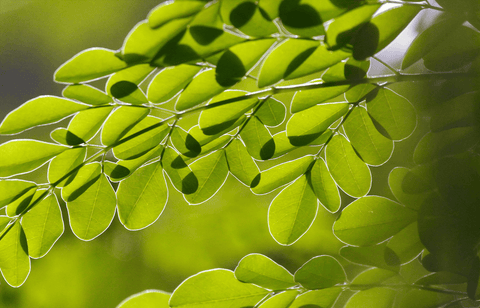What is especially unique about Philippine Moringa is that it thrives in one of 18 mega-biodiverse countries of the world.
The Philippines contains two-thirds of the earth’s biodiversity and between 70% and 80% of the world’s plant and animal species according to the Convention on Biological Diversity.
Moringa Oleifera is endemic to the Philippines and grows in almost any place where it is planted, thanks to ideal agricultural conditions such as the country’s rich soil and alternately sunny and rainy weather that exposes the plant to what is needs most. According to the book Moringa: Malunggay Philippines by Luis Villafuerte and Lalaine Villafuerte-Abonal, the Philippines is said to have one of best Moringa varieties in the world and yields better products than its foreign counterparts in terms of organoleptic properties (sensory parameters of a plant in terms weight, color, odor and taste).
The country ranks 5th in the number of plant species and maintains 5% of the world’s flora, the site adds. On its 7,107 islands thrives 52,177 described species (plants, mammals, birds, reptiles, amphibian, freshwater fishes), more than 65% of which are found nowhere else on earth. Since the country lies on the tropical belt, it has a generous supply of rainfall distributed all year round in the different parts of the region. Weather variations dictate planting and harvest seasons in these regions, ensuring that agricultural produce like Moringa is always available year-round.
MORE government commitment. The Philippine government has put to task the Department of Agriculture (DA) to improve and increase cultivation of moringa and place the Philippines in the map as a top supplier for the international market. It mandated the department to develop production, processing, and marketing of moringa in the country and come up with a five-year development framework to respond to the international demand for this wonder plant. Knowing that it’s production is the next big thing in Philippine Agriculture, the DA has readily responded by endorsing farmer scientists to come up with techniques for ‘massive propagation of moringa seedlings.
MORE local sources The Philippines is composed of three major islands and more provinces located in all three islands are responsibly and sustainably being developed as sources of Moringa tree plantations and processing to meet global demands. Among these provinces are Negros Oriental and Cebu in Visayas; Zambales, Pangasinan, Laguna, provinces in Bicol and Ilocos, Tarlac, and Nueva Ecija in Luzon; and Misamis Occidental and Agusan del Norte in Mindanao.
More ideal planting conditions The Philippines is getting to be known one of the best sources of Moringa in the world, thanks to its consistently sunny conditions, abundant water sources, rich soil, and good agricultural practices that ensure generous and high-quality supply all year round. Moringa Oleifera thrives in warm temperatures up to 118 °F, but 59 to 95 °F is considered best. Based on the average of all the weather stations in the Philippines, the mean annual temperature of the country is 79.8 °F. The coolest months fall in January with a mean temperature of 77.9°F while the warmest month occurs in May with a mean temperature of 82.9 °F. Moringa Oleifera grows in areas with annual rainfall of 760 to 2250 millimeters. The mean annual rainfall of the Philippines varies from 965 to 4,064 millimeters annually. While it’s true that Moringa is known to grow even in the harshest of conditions, the Philippines has mother nature right there taking good care of everything that grows on its soil by simply providing the best weather conditions for such plants.
More trust. Yes, with a young industry bursting with huge potential, the international market’s growing trust in the country’s ability to propagate Moringa Oleifera is ever increasing. This, according to Moringa Philippines Foundation, Inc. (MPFI). Japan, the US, Germany, China, and Israel are all looking at the Philippines as a major supplier of Moringa.




Comments (0)
There are no comments for this article. Be the first one to leave a message!